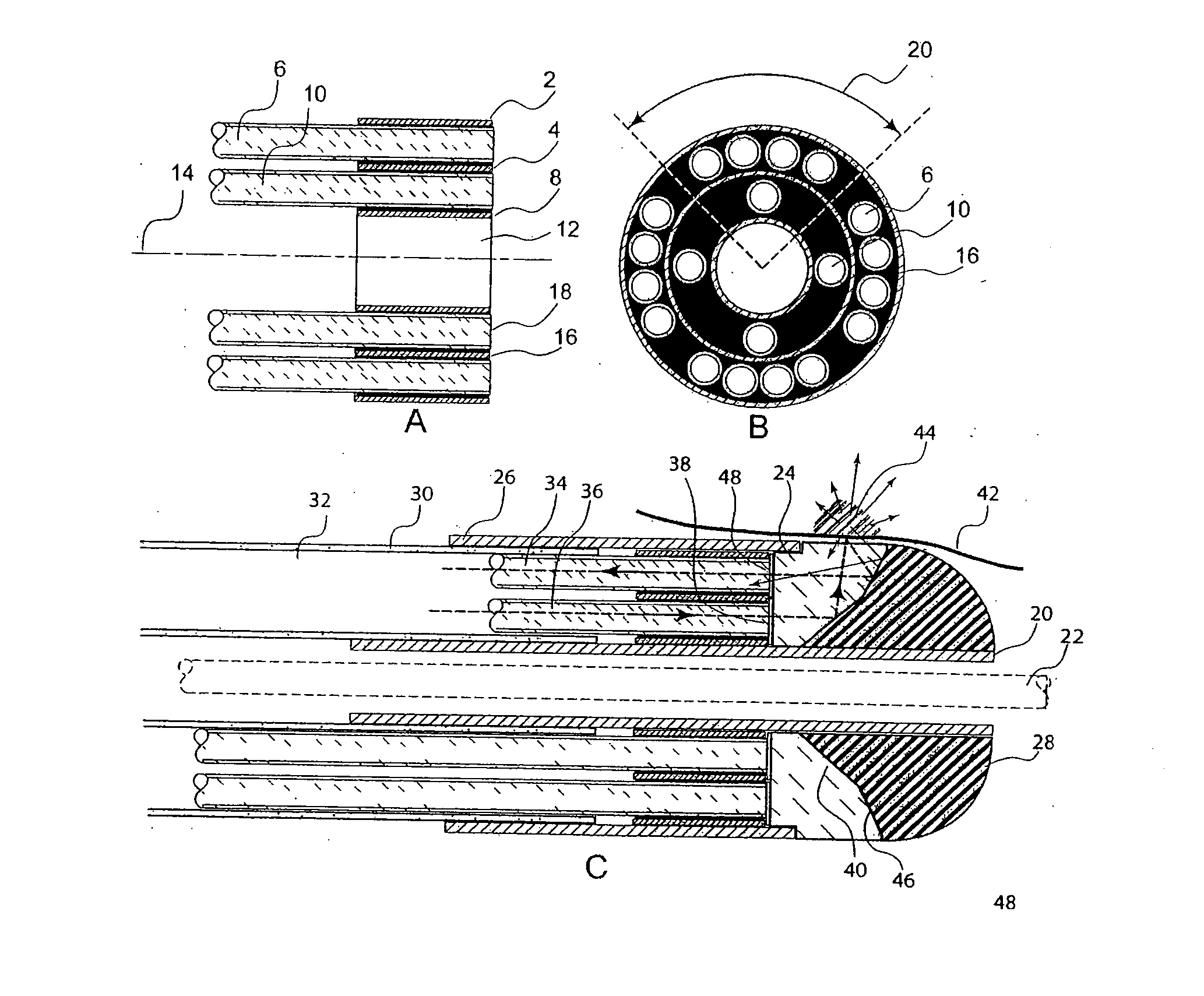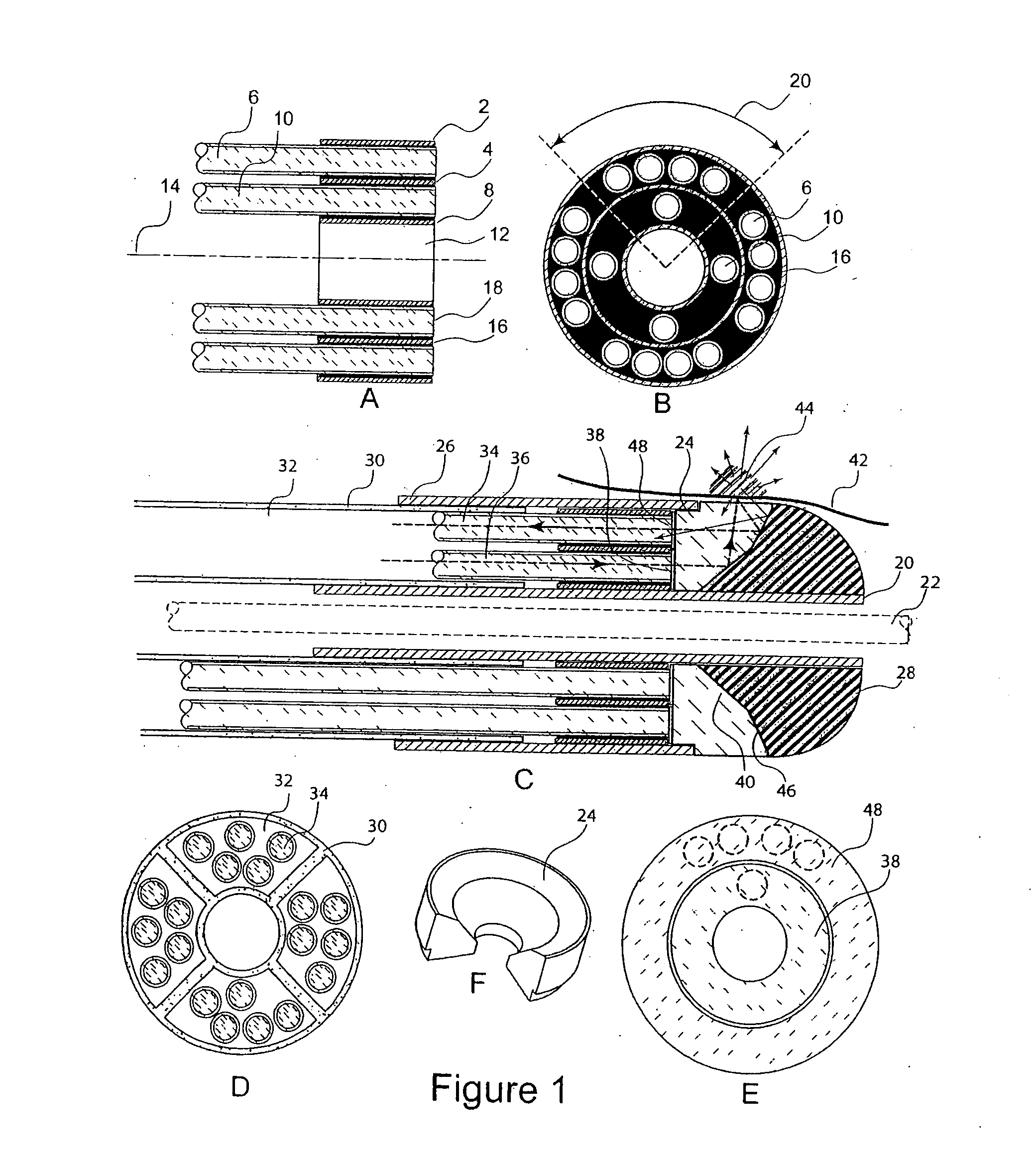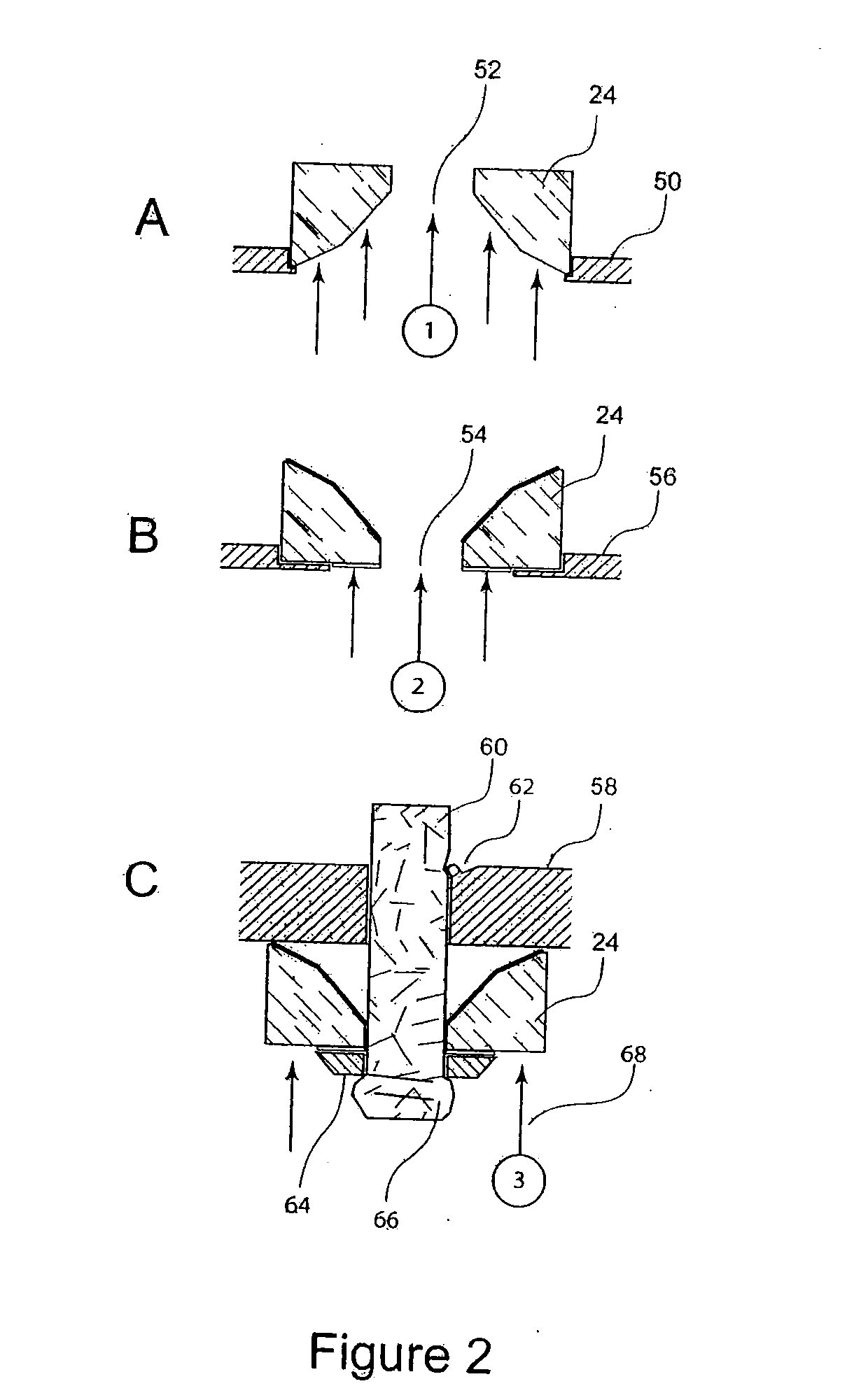Optical probe for Raman scattering from arterial tissue
- Summary
- Abstract
- Description
- Claims
- Application Information
AI Technical Summary
Benefits of technology
Problems solved by technology
Method used
Image
Examples
Embodiment Construction
[0012]FIG. 1A shows a ferrule including three concentric thin-wall tubes of drawn stainless steel which hold the optical fibers in their correct radial and azimuthal positions. The outer tube, 2, and middle tube, 4, constrain the receiver fibers, 6, to the outer radius closest to the artery wall. The middle tube, 4, and central tube, 8, constrain the excitation fibers, 10, to the inner radius. The lumen of the central tube, 8, is centered on the axis of the probe, 14, and is kept free for the passage of a guide wire. The fibers, 6 and 10, and the ferrule tubes, 2, 4 and 8, are epoxied together, 16, into a unit so that the ends of the fibers can be optically polished together to form a single plane, 18.
[0013]FIG. 1B shows an end view of the completed ferrule indicating how the excitation fibers, 10, and receiver fibers, 6, are arranged within a given quadrant, 20. The Raman excitation source is a laser, so that only a single fiber, 10, is necessary to deliver excitation light to a g...
PUM
 Login to View More
Login to View More Abstract
Description
Claims
Application Information
 Login to View More
Login to View More - R&D
- Intellectual Property
- Life Sciences
- Materials
- Tech Scout
- Unparalleled Data Quality
- Higher Quality Content
- 60% Fewer Hallucinations
Browse by: Latest US Patents, China's latest patents, Technical Efficacy Thesaurus, Application Domain, Technology Topic, Popular Technical Reports.
© 2025 PatSnap. All rights reserved.Legal|Privacy policy|Modern Slavery Act Transparency Statement|Sitemap|About US| Contact US: help@patsnap.com



